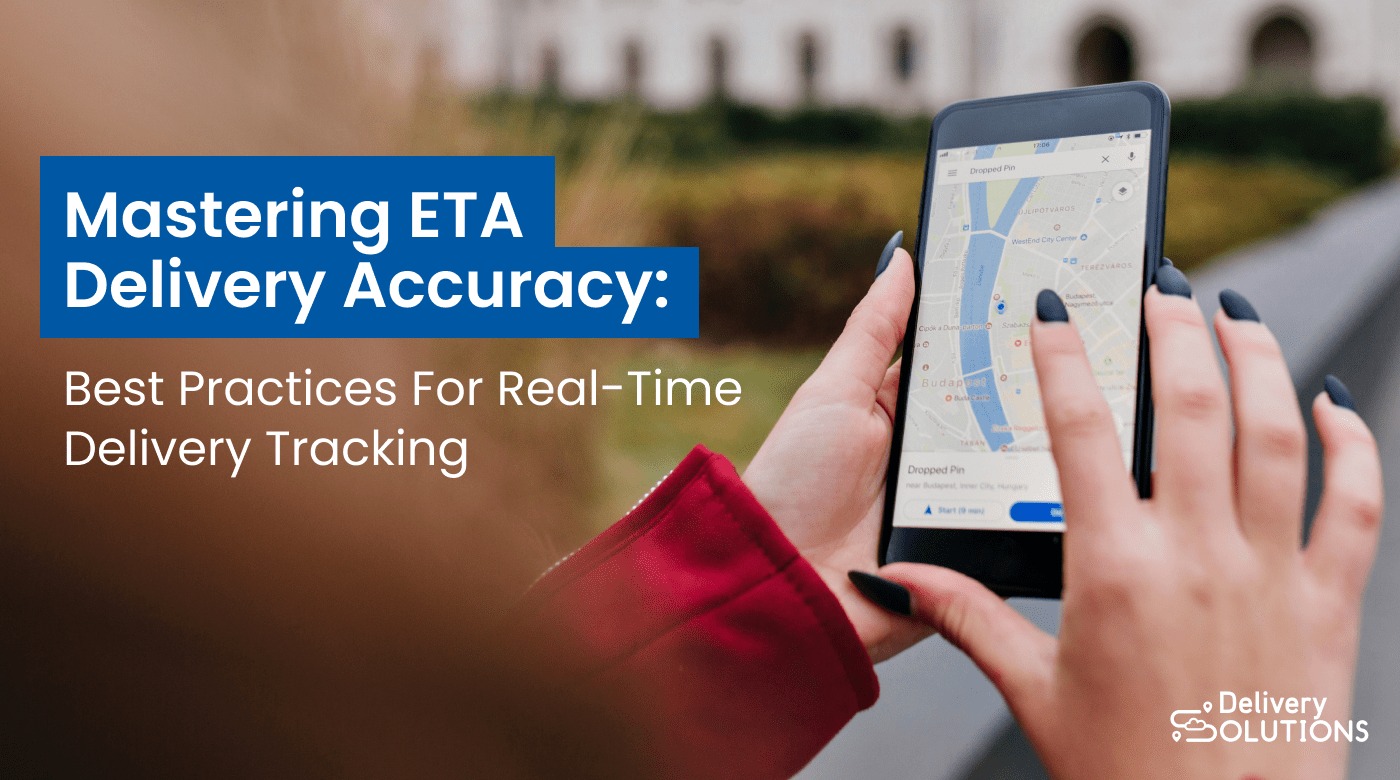Never has it been more important to provide a seamless and efficient delivery experience than in today’s fast-paced retail landscape.
To secure the loyalty of your customers and maximize their satisfaction, you must provide real-time Estimated Time of Arrival (ETA) predictions as they enable your customers to plan their day and confidently receive their purchases.
In a bid to meet these expectations, leading companies are turning to advanced strategies and technologies to master ETA accuracy in their delivery systems. And that’s what we’ll discuss in this post.
We’ll take a look at some of the best practices employed by industry frontrunners to achieve highly accurate ETA predictions.
By understanding the essential components of ETA accuracy, you, too, can deliver a superior omnichannel experience and optimize your operations for efficiency.
Beyond that, we’ll also examine how DeliverySolutions' innovative platform enables an enhanced ETA delivery experience by leveraging advanced algorithms and real-time data integration.
In the end, you’ll come away with the tools you need to streamline your last-mile operations, exceed customer expectations, and establish a competitive edge in today’s dynamic retail landscape.
Strategies and technologies for ETA accuracy
1. GPS tracking
GPS is the foundation of vehicle tracking and is an indispensable tool for any business with a logistics component.
Accurate to within a 10-foot radius, GPS tracking systems ensure precise and real-time ETA delivery tracking, allowing retailers to provide their customers with enhanced visibility into a delivery's progress versus initial plans. This allows retailers to identify potential delays as they occur and proactively update ETAs to maintain accuracy.
GPS tracking provides three core benefits that enhance ETA delivery accuracy:
1. Improved location accuracy
GPS satellites triangulate delivery vehicles in real-time within a margin of error of 10-20 feet. This provides significantly higher accuracy than other positioning methods, such as cell tower triangulation (which has a margin of error of up to ¾ square mile). With such precise vehicle positioning, ETAs can account for precise route progress rather than relying on best-guess estimates.
2. Enhanced route optimization
By combining real-time GPS data with traffic and mapping systems, you can dynamically optimize routes to avoid potential delays and save costs. For example, UPS saves over 100 million miles and 10 million gallons of fuel annually by using ORION, its proprietary logistics platform, to optimize routing with GPS. More efficient routing translates to better ETA adherence, which in turn improves ETA accuracy.
3. Real-time monitoring and alerts
You can set up GPS alerts to notify managers the moment a delivery goes off course so they can take corrective action. GPS also offers immediate visibility into traffic jams, stops, exceptions, and other delays based on static time estimates, rather than relying on guesswork. With real-time visibility, ETAs can be adjusted accordingly to better reflect actual conditions.
![]()
DeliverySolutions understands the importance of GPS tracking for ETA accuracy and integrates this technology seamlessly into its Omnichannel Experience Management (OXM) platform.
For same-day deliveries, the platform collects the real-time location of delivery service partners (DSPs) such as DoorDash, Uber, and Roadie and displays it on the branded real-time tracking page of the retailer. This integration ensures that customers have access to accurate and up-to-date ETA information, thereby elevating the overall delivery experience.
2. Data synchronization
Seamless data synchronization is a major component of accurate ETA predictions.
The vast majority of supply chain professionals lack comprehensive visibility into their operations. Specifically, only 6% state that they have complete visibility across their supply chain, while just 17% indicate they have partial visibility. This research highlights that end-to-end supply chain transparency remains an elusive goal for most organizations.
One way to achieve end-to-end supply chain visibility is to adopt comprehensive data synchronization and integration across your entire supply chain. By putting robust systems in place to synchronize data across channels in real time, you can enable more precise ETA delivery predictions.
Let’s touch on five best practices for data synchronization across multiple channels:
1. Create a centralized data repository
A centralized data repository is essential to aggregate shipment data from all customer touchpoints into a single source of truth. This eliminates data discrepancies and provides full transparency into shipment status. Leading retailers use data lakes or warehouses to ingest data from websites, stores, contact centers, and carriers. Once all the data is gathered from the various sources, they use machine learning algorithms to cleanse and structure the data for further analysis.
2. Strive for real-time data integration
With a centralized repository, you can implement real-time data integration to update shipment status instantly across all channels. When data is synchronized in real-time, your ETAs will account for the latest delays, route changes, and inventory updates. APIs enable different systems to communicate seamlessly, while message queues expedite data sharing between applications.
3. Practice data standardization
Standardized data formats and schemas align data from disparate sources for accurate aggregation and comparison. Common standards used include JSON, XML, and EDIFACT. You can implement data governance policies and metadata management to maintain consistency.
4. Implement robust API integrations
Robust APIs with built-in traffic management facilitate rapid data synchronization across channels and partners. Scalable APIs can also handle increased loads without disruption. Using RESTful APIs enables seamless integration and efficient data exchange.
5. Automate data cleansing
Automated scripts can identify discrepancies during data synchronization and reconcile errors. Natural Language Processing can validate addresses and location data. Data cleansing ensures uniform quality and accuracy for ETA models.
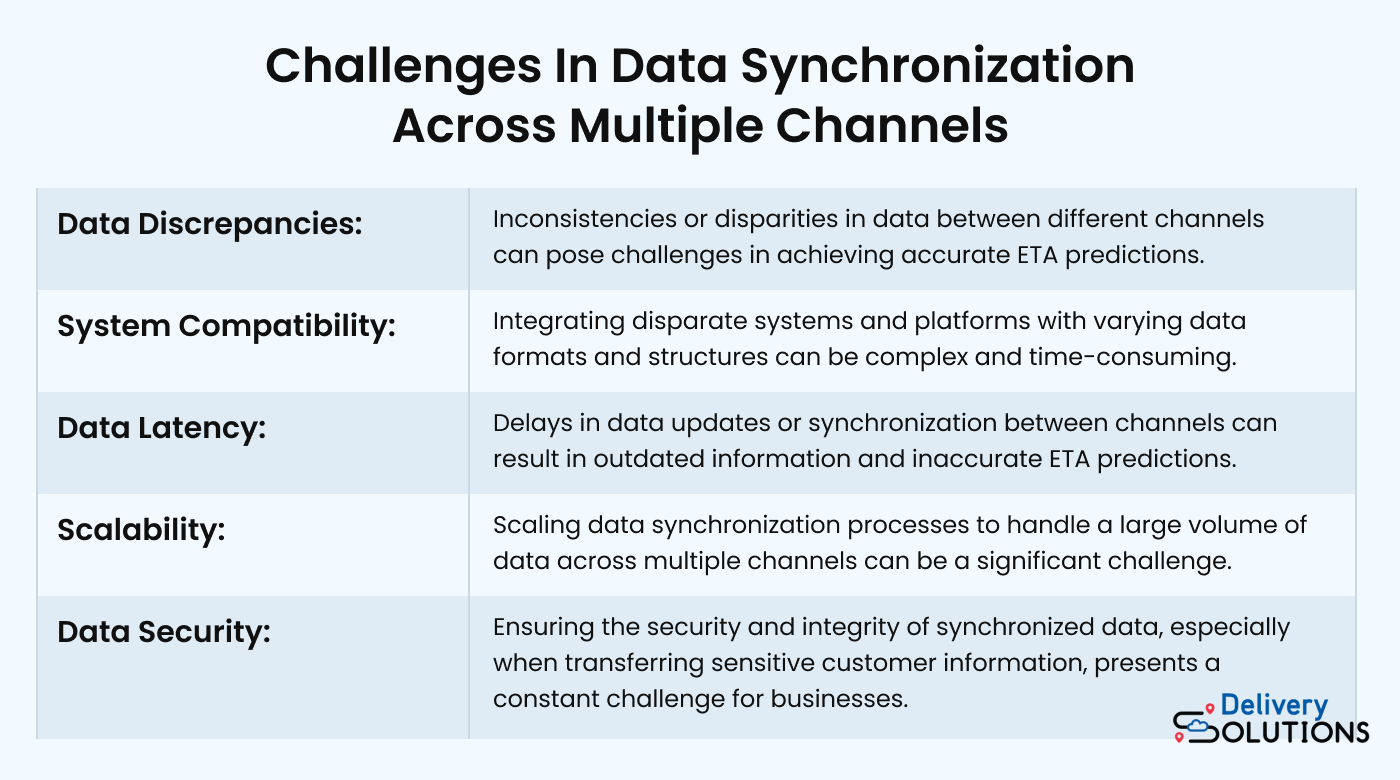
3. Predictive analytics
Predictive analytics can play a pivotal role in optimizing delivery routes, predicting potential delays, and improving overall ETA accuracy.
This technology uses historical data, weather forecasts, traffic patterns, and other variables to identify the fastest and most efficient routes for deliveries.
By considering external factors that may impact delivery times, predictive analytics allows retailers to provide customers with precise ETAs based on data-driven calculations.
Recent studies reveal that only 20% of supply chain data is structured and readily analyzable. However, advanced AI techniques can help organizations unlock value from the remaining 80% of unstructured data by applying machine learning algorithms to process, analyze, and discern patterns from both structured and unstructured sources.
This full-spectrum data utilization allows businesses to leverage their complete information assets. With AI-powered comprehensive analytics, companies can actively monitor all supply chain operations, leverage actual performance metrics, and generate predictive insights to optimize planning and decision-making.
Lenovo leveraged analytics to dramatically improve its responsiveness to supply chain disruptions. By implementing advanced analytics, the company reduced its average response time to supply chain disturbances from days to just minutes.
Specifically, Lenovo cut its reaction time by up to 90% compared to previous capabilities, enabling the company to address issues in near real-time versus days. This agility helped Lenovo better manage disruptions, minimize costs, and enhance customer service.
The benefits of predictive analytics include the following:
- Improved efficiency: Predictive analytics allows retailers to optimize delivery routes by considering various external factors like traffic congestion, road closures, and weather. This results in more efficient routes and reduced delivery times.
- Cost savings: Streamlined routes mean less fuel wasted and lower operating costs.
- Proactive delay prevention: Analytics can identify potential delays like traffic jams ahead of time. Retailers can then take measures like temporarily allocating more delivery resources to the affected area to meet ETAs.
- Smarter resource allocation: By analyzing demand patterns across geographic areas, retailers can optimally position inventory, drivers, and vehicles to meet delivery needs while minimizing idle resources.
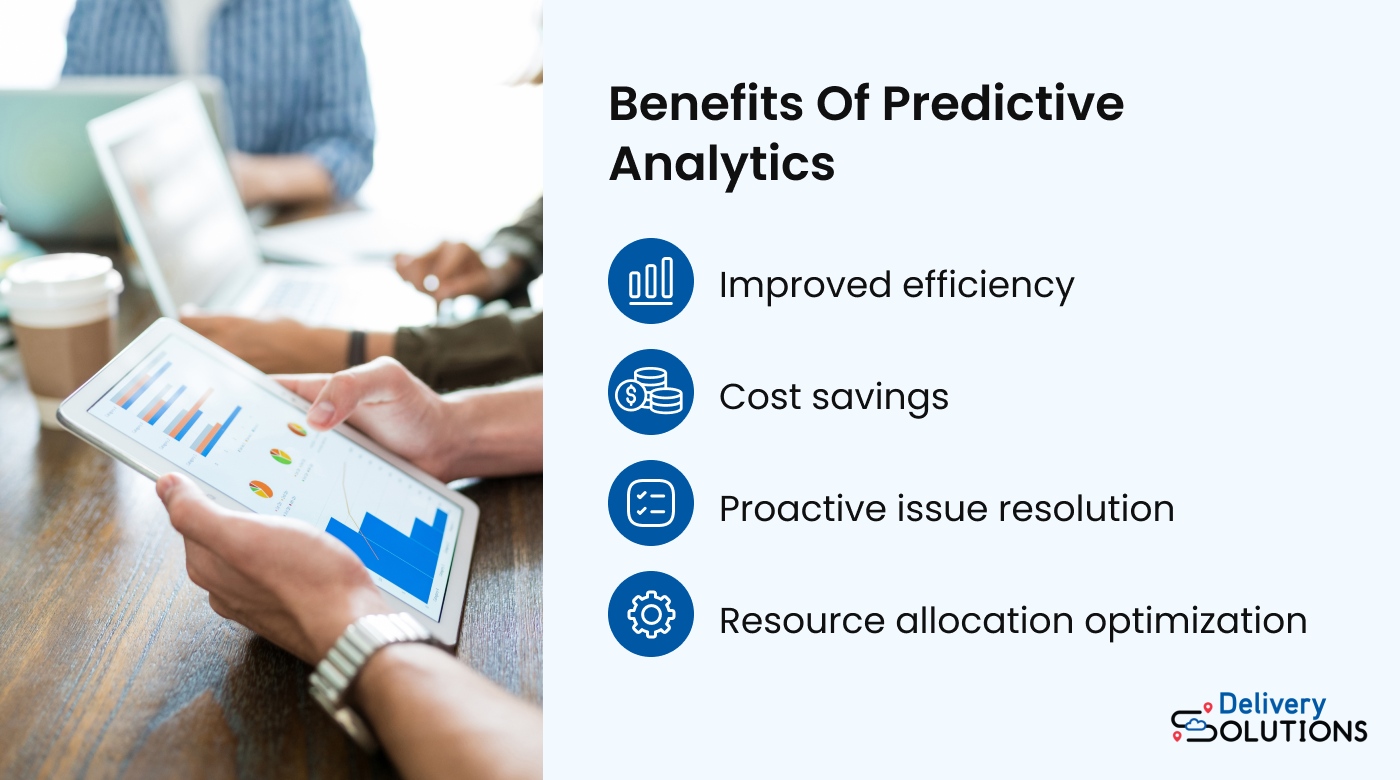
Consider DHL’s Smart Truck initiative, which the company rolled out in 2010 to optimize delivery routing. The program leveraged advanced algorithms to plot driving routes and shipment sequences using GPS, traffic, weather, and logistics data.
Once trucks were on the road, the system dynamically rerouted them based on real-time telematics to avoid traffic jams. This automated optimization reduced miles driven, boosted asset utilization, and increased on-time delivery rates.
DHL saw impressive results — miles dropped by over 15%, and fuel consumption and carbon emissions dropped considerably compared to old static routing techniques. By combining advanced analytics with agile in-transit adjustments, the Smart Truck program enabled DHL to simultaneously enhance sustainability and supply chain efficiency.
The initiative became a model for data-driven route optimization.
4. Proactive communication
Proactive communication of delivery status creates transparency, manages expectations, and minimizes dissatisfaction, thereby driving higher customer satisfaction.
Effective ETA communication requires that you adopt the following measures:
- Choose the right communication channels based on customer preferences: Selecting the most suitable channels, such as SMS, email, or mobile app notifications, ensures that customers receive ETA updates through their preferred and easily accessible platforms. For instance, recent surveys of European consumers revealed their top preferences for receiving delivery tracking updates. Email updates were the most popular, with 72% of respondents selecting this channel. SMS text messages were second at 44%, followed by carrier mobile apps at 28% and WhatsApp at 21%.
- Craft ETA updates that are clear, concise, and easy to comprehend: Providing ETA updates in a straightforward and easily understandable manner eliminates confusion and ensures that customers have a clear understanding of when their deliveries will arrive. Use simple language and avoid industry jargon. Communicate changes rapidly, providing new ETAs if delays occur.
- Personalize ETA notifications to enhance customer experience: Tailoring ETA notifications based on customer preferences and incorporating personal touches, such as addressing customers by name, reinforce a sense of individualized service. Personalization has moved from being a nice-to-have to being a must-have for brands, as 71% of consumers now expect personalization in all brand communications.
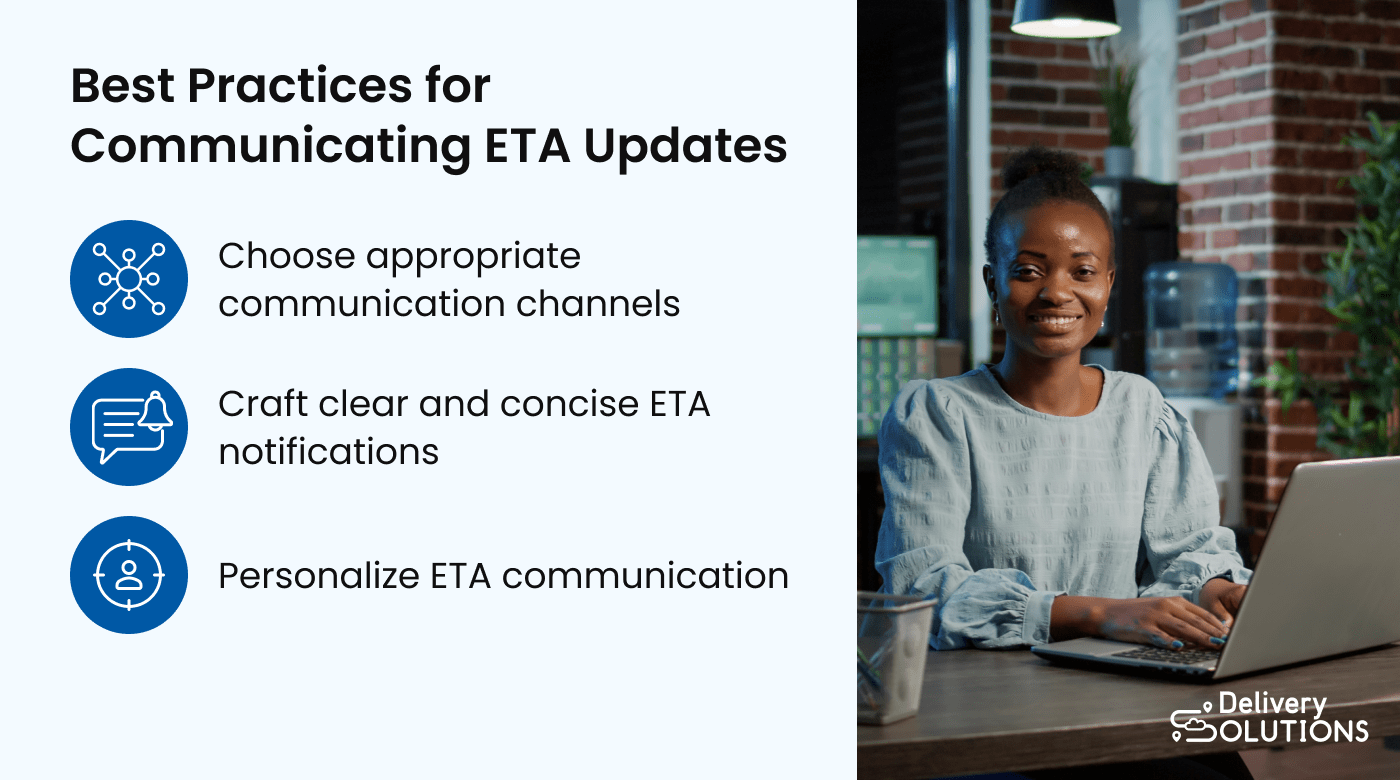
Maintaining positive customer experiences also requires actively managing expectations before and during the delivery process. Some ways to manage customer expectations include the following:
- Set realistic delivery timeframes: Clearly communicating realistic delivery timeframes, taking into account factors like distance, traffic conditions, and order processing time, helps manage customer expectations and avoids disappointment due to unrealistic expectations.
- Provide alternative delivery options and flexibility: Offering customers the choice of different delivery options — such as express shipping, scheduled delivery windows, in-store pickup, and curbside collection — allows them to select the most convenient option that aligns with their availability and preferences.
- Address unexpected delays proactively and offer compensation if necessary: When unexpected delays occur, proactively informing customers about the situation, providing regular updates, and, if necessary, offering compensation or incentives demonstrates a commitment to customer satisfaction and helps mitigate dissatisfaction caused by delays.
For instance, you may consider offering goodwill gestures like discounts on future purchases or complimentary upgrades when delays pass a threshold time. This compensates customers for the inconvenience.
Amazon does this really well. It provides delivery guarantees and automatic refunds for its fastest shipping options. If customers who choose Morning, Same-Day, One-Day, or Two-Day Delivery do not receive their orders by the date promised at checkout, Amazon will automatically issue a refund for the delivery charges.
How accurate ETA delivery predictions enhance customer satisfaction
Precise and reliable ETAs elevate the post-purchase experience, driving higher satisfaction and loyalty. Real-time tracking and proactive communication of ETAs enhance transparency and set you up to better manage customer expectations when it comes to deliveries.
Data-driven ETAs also minimize costly Where Is My Order (WISMO) inquiries.
Over 30% of all e-commerce conversations through live chat and 50% of all inbound customer service calls are WISMO inquiries. Think about what eliminating these inquiries would do for your brand image — and by extension, your bottom line since you’ll be spending less on customer service.
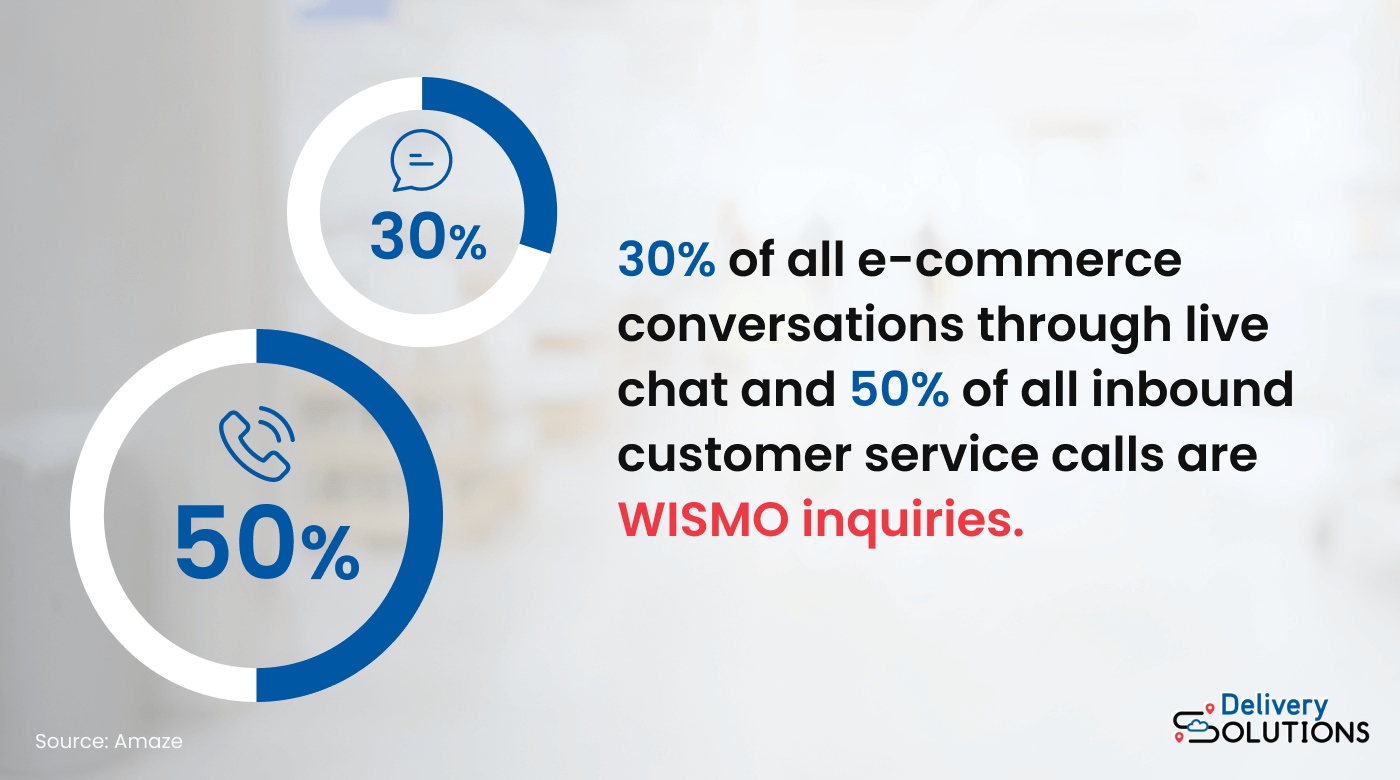
Also, consider that 68% of shoppers won’t return if they have a negative delivery experience. Therefore, eliminating WISMO inquiries by leveraging data-driven ETAs can improve customer retention too.
Conclusion
Delivery Solutions equips retailers to exceed expectations through data-driven ETAs. Integrated order, inventory, and carrier data feed algorithms to calculate hyper-accurate arrival times. Real-time GPS tracking continuously refines ETAs, while proactive customer notifications provide transparency.
This enables exemplary delivery experiences. When delays occur, Delivery Solutions' Self-Healing feature allows it to select alternate carriers and routes to minimize the impact.
For curbside pickup, Delivery Solutions’ geo-fencing feature facilitates precise ETAs.
As customers approach designated parking spots, the platform detects their proximity and alerts store staff to deliver orders within seconds of arrival. By combining location data, predictive analytics, and real-time alerts, the improved ETA accuracy empowers retailers to have orders waiting the moment a customer pulls into their spot.
Delivery Solutions' unified approach to ETA optimization provides enterprises with the technology required to deliver consistent five-star last-mile experiences at scale. The platform transforms ETAs into a competitive advantage that pays dividends through elevated customer satisfaction, retention, and Lifetime Value.
Ryan Caldarone
Ryan is a Sr. Digital Marketing Manager with over ten years of experience in B2B eCommerce, specializing in brand storytelling and content. Having contributed to hundreds of creative projects for SMBs and startups across the tech, energy, and fine arts sectors, Ryan brings diverse perspectives.
Topics from this blog: Curbside Delivery Efficiency
